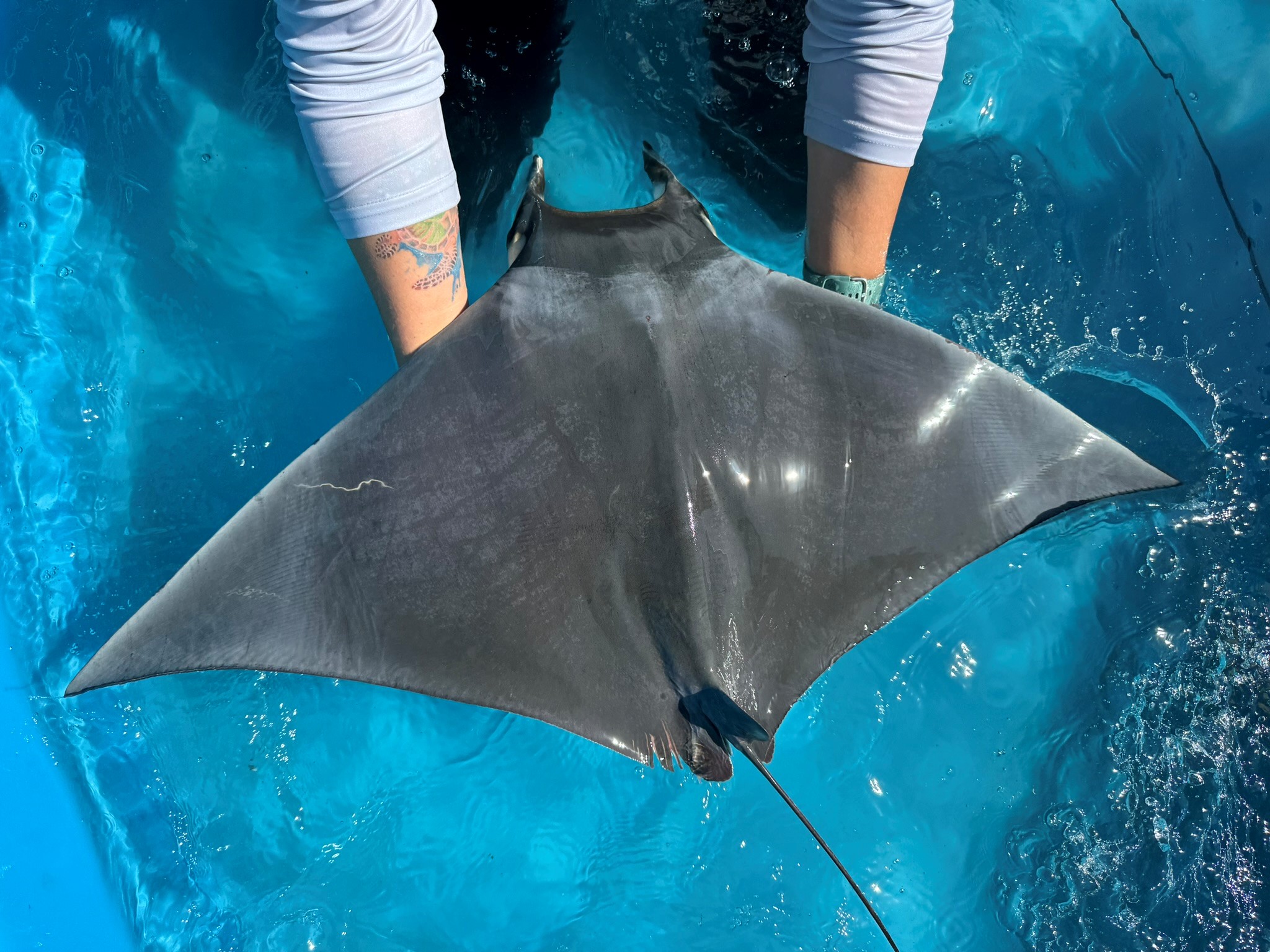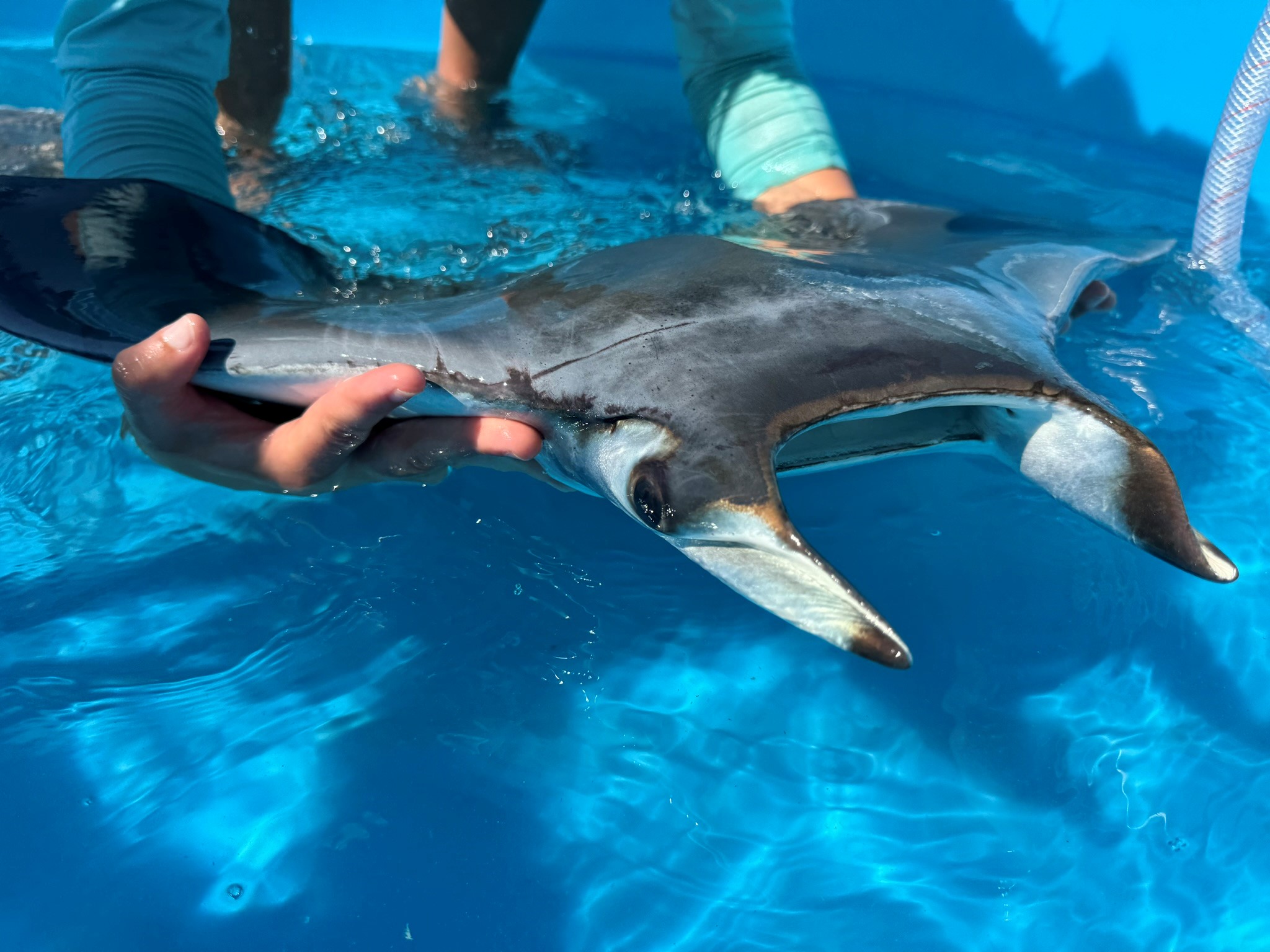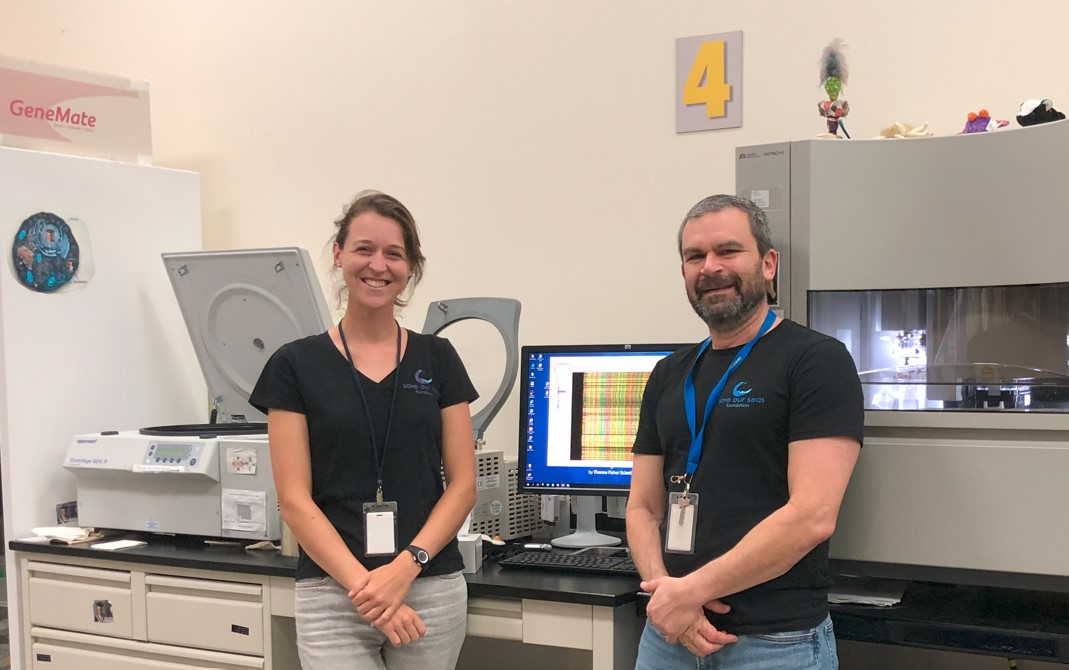The Power of Collaboration in Science
One of the things I love about being a scientist is meeting amazing people from all over the world. This past month, I had the good fortune of working with Atlantine “Tine” Boggio-Pasqua – a Ph.D. student at Aix-Marseille University in France. Tine and her colleagues are working on several life history aspects of the lesser devil ray (Mobula hypostoma). Coincidentally, Tine’s devil ray project is also funded by Save Our Seas: On a mission for missing information about ‘mini mantas’ in the Gulf of Mexico.

Lesser devil ray (Mobula hypostoma). Research activities conducted under FWC permit SAL-24-1140-SRP. Photo © Kim Bassos-Hull | Mote Marine Laboratory
One aspect of Tine and her team’s project is examining the genetic diversity across the devil ray’s range in the West Atlantic, and this is where I come into the picture. Tine was visiting Kim Bassos-Hull at Mote Marine Laboratory this fall and asked if I could help her collect DNA sequence data from a couple mitochondrial genes. The interesting thing about mitochondrial genes is that (with few exceptions) they are inherited from mom. So, by using mitochondrial data, we can study aspects of female movement between populations. In mid-November Tine arrived from Sarasota, Florida for what was beginning to turn into a wintry Chicago. As Tine had over 100 samples to process, we immediately got to work in the Pritzker Lab at the Field Museum. Incredibly, we (and by we, I mean mostly Tine) were able to successfully extract DNA from these samples over a two-day period.

Lesser devil ray (M. hypostoma). Research activities conducted under FWC permit SAL-24-1140-SRP. Photo © Kim Bassos-Hull | Mote Marine Laboratory
Halfway through her visit, I was surprised to learn Tine had virtually no experience collecting genetic data. She was a natural in the lab and was able to collect DNA sequence data for two mitochondrial genes for over 140 individual rays in just four days in the lab! The fact that she collected her data so quickly afforded us the opportunity to go over to Shedd Aquarium and visit Steve. It was wonderful having Tine come to our lab and visit one of the greatest cities in the world. O.K., being born and raised in the Chicago suburbs, I am biased, but still…

Atlantine “Tine” Boggio-Pasqua (L) and Kevin Feldheim, Ph.D., in Field Museums Pritzker Lab. Photo © Dylan Maddox
